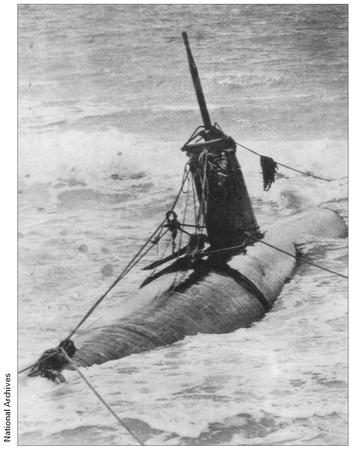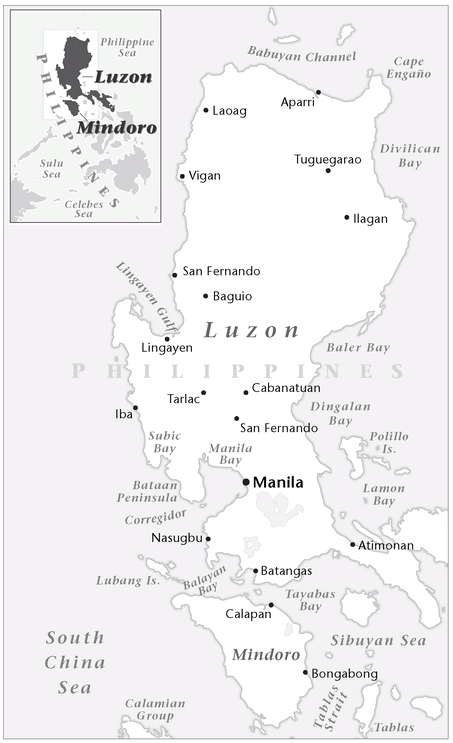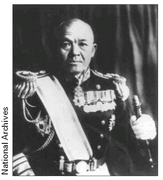War Stories II (7 page)
Authors: Oliver L. North

Ironically, these little-known facts of history are often overshadowed by the other events that originated in the skies over Pearl Harbor. This footnote to that “Day of Infamy” has been brought to light by a handful of warriors and historians from both sides of the hostilities.
For more than sixty years, members of the destroyer
Ward
, the
Monaghan
, and others had maintained that they had sunk three of the Japanese midget subs shortly before and during the infamous air attack. Yet, except for the captured sub commanded by Ensign Sakamakiâhis sub is on display at the National Museum of the Pacific War in Fredericksburg, Texasâno evidence could ever be found to prove the claim that at least three other subs were sunk. Photographs taken during the aerial attack bear out evidence
of a sub's presence in the harbor, but couldn't prove that any of them were sunk.
Ward
, the
Monaghan
, and others had maintained that they had sunk three of the Japanese midget subs shortly before and during the infamous air attack. Yet, except for the captured sub commanded by Ensign Sakamakiâhis sub is on display at the National Museum of the Pacific War in Fredericksburg, Texasâno evidence could ever be found to prove the claim that at least three other subs were sunk. Photographs taken during the aerial attack bear out evidence
of a sub's presence in the harbor, but couldn't prove that any of them were sunk.
Then in 1960, off Keehi Lagoon, Navy divers found a midget sub during practice exercises. On 28 August 2002, just a few miles outside the mouth of Pearl Harbor, another was discovered. A research submarine from Hawaii Undersea Research Laboratory made a discovery that confirms that the
Ward
fired the first shot and scored the first victory over the Japanese attackers.
Ward
fired the first shot and scored the first victory over the Japanese attackers.
John Wiltshire, director of the Hawaii Undersea Research Laboratory, told me the
Ward
did indeed sink the midget sub. He showed me a four-inch hole in the starboard side of the conning towerâa shot that even John Wayne would have had trouble making. Wiltshire said, “This is the midget sub sunk by the USS
Ward
on the morning of December 7, 1941. It was found over 1,200 feet down on the ocean floor, just a few miles outside Pearl Harbor. It vindicates the crew of the USS
Ward
. It shows that, in fact, the crew of the
Ward
accomplished that dramatic first kill with an incredible shot from an ancient deck gun.”
Ward
did indeed sink the midget sub. He showed me a four-inch hole in the starboard side of the conning towerâa shot that even John Wayne would have had trouble making. Wiltshire said, “This is the midget sub sunk by the USS
Ward
on the morning of December 7, 1941. It was found over 1,200 feet down on the ocean floor, just a few miles outside Pearl Harbor. It vindicates the crew of the USS
Ward
. It shows that, in fact, the crew of the
Ward
accomplished that dramatic first kill with an incredible shot from an ancient deck gun.”
During that first battle of World War II, the U.S. defenders nailed four of the five midget subs, having sunk three and captured the fourth, Ensign Sakamaki's, after it ran aground. The fifth sub was variously believed to have been sunk outside the harbor on 7 or 8 December, or to have escaped altogether. Twelve hours after the attack on Pearl Harbor, U.S. code-breakers intercepted a Japanese fleet message thought to have originated on the fifth midget sub: “SUCCESSFUL SURPRISE ATTACK.”
But after the war, it was concluded that the fifth sub had been lost trying to rendezvous with the mother subâand it's still out there somewhere in the Hawaiian waters. All five mother ships waited two days for the midget subs to return. None did.
In the aftermath of the attack, Admirals Nagumo and Yamamoto would be decorated by Emperor Hirohito for their victory. Admiral Husband Kimmel and General Walter Short were relieved of command just ten days after the attack. Though both men asked for courts-martial to clear their names, neither request was granted.
And as for American forces at Pearl Harbor? Other than the irreplaceable lives lost, the attack was not as devastating as it might have been. Half the Pacific Fleet, including its three carriersâthe
Enterprise
, the
Lexington
, and the
Saratoga
âwere out of port on various assignments. Because the Japanese neglected to attack the shipyards, salvage and repair work on damaged vessels began almost immediately. Of the battleships that the Japanese thought they had sunk forever, only the
Arizona
and the
Oklahoma
(and the target ship
Utah
) were total losses. The
West Virginia
, the
California
, the
Nevada
, the
Pennsylvania
, the
Maryland
, and the
Tennessee
were all repaired and saw action later in the war. And the same was true for the cruisers
Helena
,
Honolulu
, and
Raleigh
. Other than the destroyers
Cassin
and
Downes
and the repair ship
Sotoyomo
, which were damaged beyond repair, every other vessel hit during the attack was fixed and returned to duty.
Enterprise
, the
Lexington
, and the
Saratoga
âwere out of port on various assignments. Because the Japanese neglected to attack the shipyards, salvage and repair work on damaged vessels began almost immediately. Of the battleships that the Japanese thought they had sunk forever, only the
Arizona
and the
Oklahoma
(and the target ship
Utah
) were total losses. The
West Virginia
, the
California
, the
Nevada
, the
Pennsylvania
, the
Maryland
, and the
Tennessee
were all repaired and saw action later in the war. And the same was true for the cruisers
Helena
,
Honolulu
, and
Raleigh
. Other than the destroyers
Cassin
and
Downes
and the repair ship
Sotoyomo
, which were damaged beyond repair, every other vessel hit during the attack was fixed and returned to duty.
Â
Japanese Midget Sub

Fuchida's pilots also ignored two other targets that would prove critical to the United States in the days ahead: Untouched by a single Japanese bomb or bullet was the enormous fleet fuel farm, where millions of gallons of fuel oil and aviation gas were stored. And in perhaps the greatest error of all, not one of the U.S. submarines in port at the time of the attack was touched. Yamamoto's Combined Fleet would soon feel the consequences of these mistakes.
A total of 350 Japanese aircraft carried out assaults on the
Utah
, the
Raleigh
, the
Helena
, the
Arizona
, the
Nevada
, the
California
, the
West Virginia
, the
Oklahoma
, and the
Maryland
. The U.S. Pacific Fleet was nearly decimated. At the same time, attacks on nearby air bases severely crippled America's air assets. Kaneohe Naval Air Station lost thirty-three out of thirty-six of its Catalina PBY flying boats. Hickam Field and the base at Ford Island suffered extensive damage to the runways, to aircraft parked on the fields, and to barracks and BOQ buildings housing the military personnel.
Utah
, the
Raleigh
, the
Helena
, the
Arizona
, the
Nevada
, the
California
, the
West Virginia
, the
Oklahoma
, and the
Maryland
. The U.S. Pacific Fleet was nearly decimated. At the same time, attacks on nearby air bases severely crippled America's air assets. Kaneohe Naval Air Station lost thirty-three out of thirty-six of its Catalina PBY flying boats. Hickam Field and the base at Ford Island suffered extensive damage to the runways, to aircraft parked on the fields, and to barracks and BOQ buildings housing the military personnel.
Some ninety-eight ships, about half of the U.S. Pacific Fleet, were in port the day of the attack. Miraculously, the other half of the American fleet was elsewhere in the Pacific on that fateful day. All of her carriers, most of her heavy cruisers, and about half of her destroyers were at sea when the attack occurred. That lucky break would help the United States greatly when America fought back, determined to rebound.
Luck, or Providence, played a key role that day for America.

CHAPTER 2
THE FALL OF THE PHILIPPINES
(JANUARY 1942)
W
ithout pausing to celebrate the successful attack on Pearl Harbor, Admiral Yamamoto launched phase two of his ambitious Operation Z war plan. Though the calendar shows the date of these events as 8 December, they all took place within hours of the attack on Pearl Harbor because of the International Date Line.
ithout pausing to celebrate the successful attack on Pearl Harbor, Admiral Yamamoto launched phase two of his ambitious Operation Z war plan. Though the calendar shows the date of these events as 8 December, they all took place within hours of the attack on Pearl Harbor because of the International Date Line.
As Admiral Chuichi Nagumo's First Carrier Strike Force steamed west toward Kure, Japan, he detached the carriers
Soryu
and
Hiryu
, accompanied by the cruisers
Tone
and
Hiru
, along with two destroyers, all with orders to attack the tiny American garrison on Wake Island. At 1150, less than four hours after they had seen action in Hawaii, some of the same pilots and aircraft bombed the U.S. base on Wake, destroying eight of the twelve brand-new Marine aircraft that had just been delivered on 6 December by the USS
Enterprise
.
Soryu
and
Hiryu
, accompanied by the cruisers
Tone
and
Hiru
, along with two destroyers, all with orders to attack the tiny American garrison on Wake Island. At 1150, less than four hours after they had seen action in Hawaii, some of the same pilots and aircraft bombed the U.S. base on Wake, destroying eight of the twelve brand-new Marine aircraft that had just been delivered on 6 December by the USS
Enterprise
.
Two hours later, aircraft from the Japanese 2nd Fleet, commanded by Vice Admiral Nobutake Kondo, attacked the British bastions at Hong Kong and Singapore, in preparation for full-scale invasions.
Five hours afterward, while flames still burned in the battered hulls of America's Pacific Fleet in Hawaii, and despite radio and telegraph messages reporting on the Pearl Harbor attack, Japanese aircraft launched from Formosa scored a successful surprise air assault on U.S. facilities in the Philippines. The 160-plane contingent of the Army Air Force that General Douglas MacArthur had been so painstakingly building to defend the islands the United States had sworn to protect was shatteredâat a cost of just seven downed “Zero” fighters. The air raid eased the way for an invasion of the archipelago by more than 43,000 troops under the command of General Masaharu Homma.
Within six hours, bombs fell on Agana, the capital of Guam, and on all of the island's U.S. air and naval bases. This too preceded an invasion, making Guam the first U.S. territory to be seized by Japan.
Twelve hours after the attack on Pearl Harbor ended, it was just beginning at the tiny atoll of Midway. Japanese destroyers, attempting to put the island's runway out of commission with naval gunfire, came in so close that Marine artillerymen were able to fire back. The tiny garrison rejected the Japanese order to surrender.
Â
Vice Admiral Chuichi Nagumo was CINC of the Imperial Navy's First Carrier Strike Force.

The day after the Pearl Harbor raid, the U.S. Congress declared war against Japan. Invoking terms of their Tripartite Pact, Germany and Italy responded on 11 December by simultaneously declaring war against the United States.
Within forty-eight hours of the surprise attack on Hawaii, every major American and Allied base west of California had been attacked. The Japanese had seized Bangkok, Thailand, and Tarawa and Makin in the Gilbert Islands, and the American garrisons in Shanghai and Tientsin, China, had surrendered. Off Singapore, the British had lost their two largest capital ships in the Pacific,
the battleship
Prince of Wales
and the battle cruiser
Repulse
, along with 840 British sailors.
the battleship
Prince of Wales
and the battle cruiser
Repulse
, along with 840 British sailors.
These near-simultaneous strikes throughout the western Pacific, thought by most military officers of the day to be impossible, were the consequence of Yamamoto's meticulous operational and logistics planning. Their success also demonstrated the appalling condition of American intelligence and the abysmal state of American preparedness for war.
 HQ ASIATIC FLEET
HQ ASIATIC FLEETOther books
Devdan Manor by Auden D. Johnson
Wildflower by Lynda Bailey
The Kasparov Agenda (Omega Ops Legion Book 1) by C.S. De Mel
Hamfist Over the Trail by G E Nolly
The Billionaire's Milkmaid (BBW Lactation Erotic Romance) by Boehners, Meghan
A World of Other People by Steven Carroll
Wildfire Wedding by Sowell, Lynette
The Last Knight Errant: Sir Edward Woodville & the Age of Chivalry by Christopher Wilkins
Temple of the Traveler: Empress of Dreams by Scott Rhine